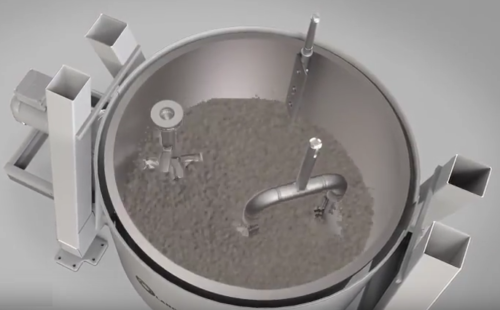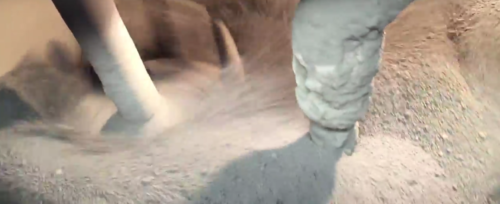 Industrial mixers are often considered the heart of a processing facility. While we at Lancaster Products are diligent in our up-front materials processing sampling, it is not enough to simply confirm that the required physical specifications of the materials are met.
Industrial mixers are often considered the heart of a processing facility. While we at Lancaster Products are diligent in our up-front materials processing sampling, it is not enough to simply confirm that the required physical specifications of the materials are met.
When choosing an industrial mixer one must understand that there are a significant number of factors that need be taken into consideration such as yield rates, cost per yield, mixing time, mixing intensity, etc. It is critical that machine builders have a complete understanding of the entire process to recommend the right mixer to maximize the overall processing workflow.
There is a basic principle of energy that states, “A defined amount of energy is required to accomplish any task”. This statement also embraces the science of mixing. Mixing is the intermingling of ingredients to the extent that is acceptable for the final process or usage. Mix homogeneity greatly affects the product’s qualities or reject rate.
When mixing solids and/or liquids, the objective is to disperse the ingredients in such a way that these initially segregated ingredients are repositioned randomly and evenly uniformly throughout the mix which takes energy to accomplish.
Material characteristics such as particle size, density, and shape as well as cohesive and adhesive tendencies all affect the ease or difficulty to achieve a good mix. For similar size and density, free flowing ingredients, such as granular materials without cohesive influences, little mixer energy is required. A low intensity mixer inputting as little as 5 HP per 1,000 pounds of mix could be adequate to produce a good mix within a reasonable batch cycle. A recipe consisting of largely powdery and fibrous ingredients on one hand and a tightly agglomerated minor ingredient on the other will present a much greater challenge. In such cases, the mixer is asked not only to mix the ingredients, but also to separate the fibers and de‐agglomerate the lumps. Almost intuitively, we recognize there is some minimum intensity that is required to handle these additional tasks.
The preceding description touches on some of the basic energy‐related considerations in mixing:
1. A certain minimum level of intensity is needed to achieve a good mix. That minimum level of intensity is dependent on ingredient characteristics and their interactions.
2. A fixed amount of energy is needed to disperse an equal amount of ingredients having the same characteristics to the same degree of homogeneity.
3. Mixing energy should be distributed to the batch evenly.
4. Mixing time and intensity are inversely related through mixing energy.
 Therefore, it is no great revelation that generally, if specific intensity (i.e. intensity per unit weight of the mix) doubles, mixing time to the same level of dispersion can be halved.
Therefore, it is no great revelation that generally, if specific intensity (i.e. intensity per unit weight of the mix) doubles, mixing time to the same level of dispersion can be halved.
For batch processes, one can manipulate intensity by adding/removing mixing tools, or one can increasing the speed of the mixing tool, or both. The speed approach generally follows the relationship that intensity varies as the square of the tool speed. For example, doubling the peripheral speed of an agitator from 10 ft. per second to 20 ft. per second increases intensity four-fold, hence resulting in mixing time being reduced to ¼. Suddenly, the same mixer’s production capacity is almost quadrupled!
How can we be confident that the above is the case? The answer is: we can follow experimentally with the use of statistical analysis on mix samples drawn through two mixing cycles, one at a preset base tool speed, the other at, say, double that speed. A commonly used parameter called “mixing index” allows us to map the progress of dispersion.
Contact us today with your full processing specifications and our Engineers will find the right solution to satisfy your requirements.
717-273-2111


